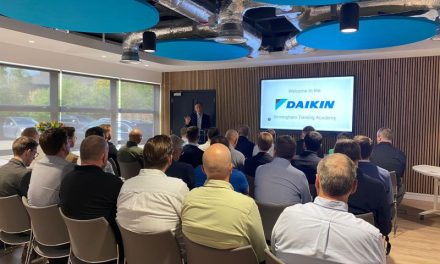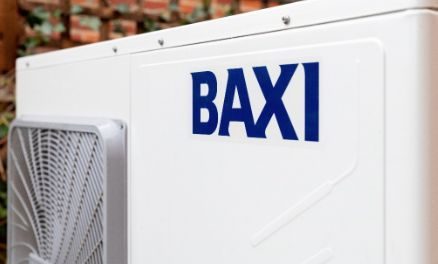 The latest generation of mechanical ventilation and heat recovery (MVHR) systems is just one of the emerging solutions designed to optimise energy usage in the HVAC sector. Here, Newey & Eyre’s Steve Havell highlights some of the benefits MVHR offers the end customer
The latest generation of mechanical ventilation and heat recovery (MVHR) systems is just one of the emerging solutions designed to optimise energy usage in the HVAC sector. Here, Newey & Eyre’s Steve Havell highlights some of the benefits MVHR offers the end customer
Statistics show nearly half of the UK’s carbon emissions come from our buildings. However, more than one in three of the properties we’ll be working and living in by 2050 have yet to be built. Therefore, as the coalition government’s green agenda remains paramount, the aim is to take action now to make a real difference to the future.
The HVAC sector has been a key focus in this. October 2010 saw the highly anticipated arrival of the new approved Building Regulations Part L, setting out significant changes to drive the adoption of low carbon ventilation as an industry standard. With buildings becoming more airtight, changes to Part F have also come into effect to make ventilation even more efficient. The key change here is greater ventilation provisions for buildings with design air permeability tighter than or equal to 5m3/(h.m2) at 50Pa. For dwellings with intermittent or passive stack ventilation systems, in airtight dwellings the guidance increases background ventilation by up to 50%.
Feeling the impact
The impact of these changes has coerced a definitive market shift from traditional individual ventilation products to more efficient whole house MVHR systems. And so, the onus is on contractors and installers to get to grips with this previously under utilised innovation and, in turn, reap the financial benefits.
 MVHR systems have been around for decades but have often been overlooked as they can be more difficult to install than traditional options. However, the environmental benefits cannot be ignored and smart contractors are taking the opportunity now to train on how to install MVHR systems to ensure they are best placed for future developments.
MVHR systems have been around for decades but have often been overlooked as they can be more difficult to install than traditional options. However, the environmental benefits cannot be ignored and smart contractors are taking the opportunity now to train on how to install MVHR systems to ensure they are best placed for future developments.
In summary, the MVHR is a compact air handling unit designed to deliver efficient ventilation with highly efficient heat recovery, along with cooling recovery for use in the hot summer weather.
How does it work?
The way the MVHR works is simple, yet clever. It continuously extracts both fresh air from the outside as well as polluted air from the wet areas of a dwelling, such as kitchens and bathrooms. As the air passes over a heat exchanger inside the unit, heat energy from the stale air is taken and transferred to the incoming air, enabling a constant flow of fresh, filtered air into the habitable rooms, lounges and bedrooms. This creates a balanced airflow throughout the dwelling.
Better still, with almost no moving parts, MVHR systems are practically maintenance-free and simply require both filters to be changed at least once a year. This can be done within a few minutes.
MVHR systems are set to become more and more popular, bringing benefits that include energy efficiency, healthy ventilation and reducing the need for home improvement. Therefore, for the shrewd installer, it is time to move with the times and get on board with MVHR
In addition to providing excellent indoor air quality, MVHR systems help to keep fuel bills down, contributing to national reductions in energy consumption and green emissions. The total energy savings can depend on a number of factors such as how airtight the house is, the amount of energy used and heat recovered, and the way the home is heated. However, most manufacturers are quoting a 90-95% heat recovery on energy which would otherwise be wasted. Naturally, as energy prices continue to soar, this is likely to become a much more appealing option for the savvy homeowner.
Another benefit is a much healthier indoor air quality. The MVHR removes harmful pollutants and stale odours from the air, as well as lowering relative humidity. This helps to eradicate house dust mites and fungal growth, both of which can cause real problems for many asthma sufferers and lead to allergies.
These systems are also able to help address the issue of condensation. A typical household of four people can produce up to 18 litres of moisture per day which can lead to excessive humidity in the air and encourage mould growth. By ensuring a constant air flow, MVHR systems can combat condensation, thereby reducing the associated need for regular and costly redecoration.
Summary
Opening up a world of opportunity, MVHR systems can be installed in all types of properties. While they are traditionally used in new builds, there is also an opportunity where homes are being refurbished or for older properties where stale air and moisture can cause damage. Although primarily aimed at the residential market, these systems are also ideal for smaller commercial outlets such as offices, adding further profit potential.
In the current climate, installers can simply not afford to specify the same tried and tested products. As the need for sustainability grows, sophisticated MVHR systems will become more popular, bringing benefits such as energy efficiency, healthy ventilation and reducing the need for home improvement. Therefore, for the shrewd installer, it is time to move with the times and get on board with MVHR.
Newey & Eyre
T: 08443 753 108




